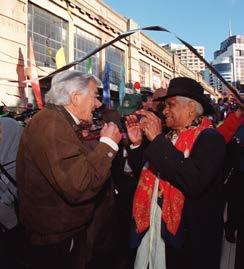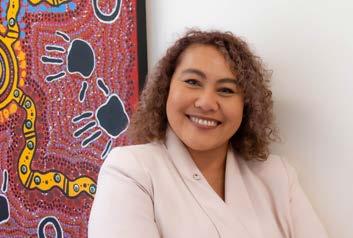8
Issue no. 43 / May 2020
A DEFINING MOMENT FOR RECONCILIATION The Sydney Harbour Bridge Walk for Reconciliation in 2000 and similar events that took place around Australia in the weeks following were collectively the biggest demonstration of public support for a cause that has ever taken place in Australia.
To understand how the bridge walks came about it’s useful to go back a few years to the establishment of the Council for Aboriginal Reconciliation by the Australian Parliament in September 1991.
The walks were a wonderful national expression of the desire for meaningful reconciliation between Australia’s Indigenous and non-Indigenous peoples.
The central purpose of the Council was to guide the reconciliation process over the rest of the decade, leading up to the anniversary of Federation in 2001. The Council’s aims were to improve relations between Indigenous and non-Indigenous Australians through increased understanding of Aboriginal and Torres Strait Islander cultures, the history of past dispossession and presentday disadvantage, and to foster a national commitment to addressing these disadvantages.
The 1990s The Council’s decade proved to be hugely significant for progress towards reconciliation. In 1991 the final report of the Royal Commission into Aboriginal Deaths in Custody was released. This report instigated the establishment of the Council, and revealed to many Australians for the first time the profound and sustained cultural, social, spiritual, and economic damage caused by state intervention into Aboriginal and Torres Strait Islander families and communities. A year later the High Court handed down the Mabo decision, which rejected the doctrine that Australia was terra nullius (land belonging to no-one) at the time of European arrival. In his famous Redfern Park speech, Paul Keating became the first Australian Prime Minister to truthfully acknowledge the violence and dispossession committed against Aboriginal and Torres Strait islander peoples during Australia’s colonisation In 1993, Parliament consolidated the Mabo ruling by passing the Native Title Act, which sought to provide a national system for the recognition and protection of native title and for its co-existence with the national land management system. Then in 1996, the High Court handed down the Wik decision, which confirmed that native title rights could coexist with pastoral and leasehold tenures but that pastoral leases do not necessarily extinguish native title. In 1997, the Human Rights and Equal Opportunity Commission published the Bringing them Home report, which revealed the horrifying extent and legacy of Australia’s past policies of removing Indigenous children from their parents. These people became known as the Stolen Generations. A constantly flowing river of people cross the bridge for reconciliation. (photo by Brad Newman/Newspix)











